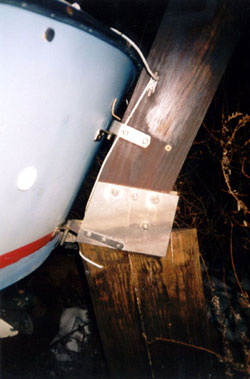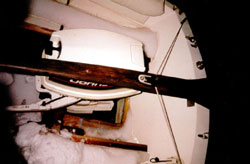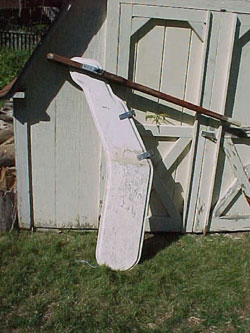
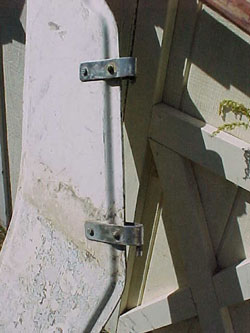
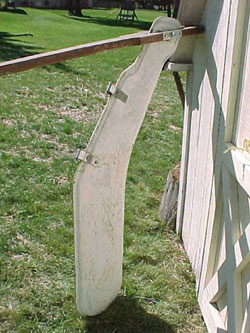
Basic original fix rudder (marginal to lame). I think this is only a little better than the pivoting rudder, because it is just a little stiffer. But on the other hand it is completely under-sized, and too weak for the job at hand. Notice in these pictures, the failure and repair at mid rudder. This is where the maximum stress is placed upon the rudder, and of course exactly where this design fails.



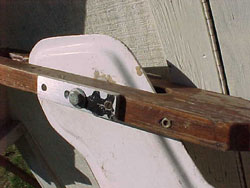
Basic original pivoting or kickup rudder (marginal to lame). This is what I had on my sailboat originally. Advantage - This lets you get into shallower water than a fixed rudder (if you have a fixed keel this is irrelevant). Disadvantages - Kicks up (when you touch bottom, or even if you don't touch bottom) and then becomes very difficult to control ( as well as, becomes almost impossible to put back down while under way). This weak design allows the upper half to flex and bend alot (especially after the rudder has been kicked back, this causes it to flex even more (it is trying to tear itself in half), while giving you almost little or no control of the boat). It is a leveraged thing. Note the last two pictures in this set. I can only assume that this was Wayne's attempt to stiffen the upper half of the rudder. Even after doing this upgrade, it still does not address the weakest point on the rudder, the pivot joint. This is where my rudder broke right off (a blessing in disguise or is that disgust) at the pivot joint. This is a marginal design that can be easily upgraded into a decent rudder by building a new one from scratch out of heavier material.
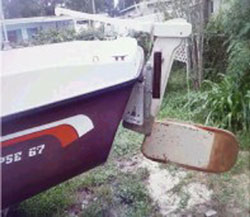
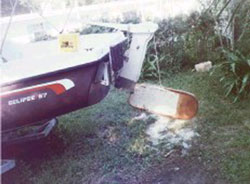
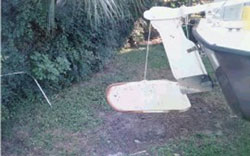
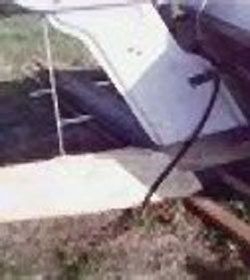
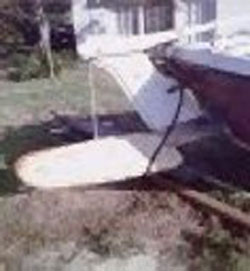
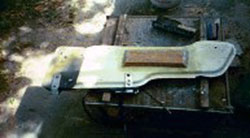
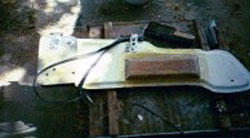
This is my replacement rudder (hard core & excellent - it has none of the problems of the original design). My web Site gives discriptions of material used, how it was built etc... Besides being dirt cheap to produce, it is bigger (longer/deeper, much wider and thicker than the original rudder), much heavyier, much stronger, and a lot stiffer than the original rudder and will probably outlast my boat. The larger rudder allows you to put much greater influence on the boat's direction with much less effort on the tiller. Also since I made it out of pressure treated wood, it is very easy to maintain.
It is longer than the original by choice and design. You can feel the rudder touch bottom about 2-4" before my keel & keel housing touches bottom. It is kind of like and early warning system in shallow water. Being a pivot type of design, this allows for the rudder to pivot back as the boat goes shallow. This allows me to do a 180 degree turn and get out of the shallows before the keel gets grounded. One other thought, by running the rudder deeper than the original design, it allows the business end of the rudder to do more "leveraged" good in influencing the boats direction (in other words, the rudder has more bite) with less stress and strain on the tiller (and my arm).
Go back to my web site and look for "Rudder Replacement". Also note the tiller tamer, a great addition to any rudder design. Sorry I don't have any better pictures of my rudder. These were taken at night, in the freezing cold (note the snow around the motor. I will upgrade these pictures in a few weeks when I bring the boat back to the house for it's preseason refit.
